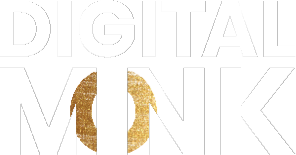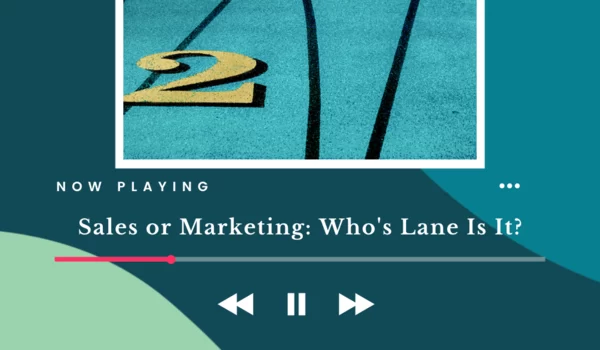When over 80% of consumers say they are more likely to make a purchase when a brand provides a personalized experience, it’s something to take notice of. Not only that but personalizing your marketing has shown a strong co-relation to building better customer relationships and converting more business. Essentially, if you want better results from your marketing that have a significant impact on your bottom line, you need to invest in personalizing how customers experience your brand. It’s clear that there is a need to personalize your customer’s entire end to end experience but before we get into specific tips on getting there on a budget, let’s look at the why and how of personalization.
Why Should I Personalize My Marketing?
Well, 58% of consumers are more likely to convert when they receive content based on their previous behaviour. If two-thirds of your potential customers want you to provide them with personalized messaging, content and solutions, isn’t it an easy sell to suggest you should give them what they want?
Personalization applies to everything – from the ways you first engage with a prospect, to how you deliver content that’s relevant to them, to providing unique solutions that work for them (before AND after) their purchase. Everything you learn about them is information that can be used to customize what they experience.
How Do I Create A Personalized Experience?
Personalization will look different at every stage of the buying cycle but the key is to understand your customers by asking them regularly what they like, what they don’t, where they need more, what challenges they have with your brand and just more about them in general. Once you have this information, the most important step is having a great plan for how to store, collate and put this data to effective use.
Finding out what your customers want from you in general helps to inform processes, policies and your overall offering. Getting to know how your customers interact with your products and services, what problems they have that you can help with and what their preferences helps you to deliver a more customized experience that truly connects to the heart of why they do business with you. For example, personalizing the buying process may look like sending a follow up email about the specific products the customer was viewing on your website.
Or sending them a video or case study that gives them more insight into what the particular product or service can help with. Customers also do not want cookie cutter solutions. They want to feel that your solutions are tailored to their needs. This could be as simple as offering a questionnaire and then recommending products that work together or which package option suits their needs. It may look like leaving room in your sales process to allow customers to pick and choose what they need and what they don’t.
Or it could be as simple as adjusting a policy or procedure to make a particular offering work for them. This can be done automatically or require human intervention, but as long as the options are there, you’ll be much more likely to convert and retain customers with flexible policies and options. And when it comes to customer service, we would make a strong case for personalizing what you offer. Again, this can be as simple as using their name in communications, but it can also be as complex as giving your team the autonomy to develop custom solutions for each unique situation.
It’s a common worry that if you are too flexible, customers will expect too much or take advantage, but the data shows that this happens few and far between. What is more likely is that the customer will stay with you long enough that their lifetime value will exceed whatever concession you’ve made. Not to mention the customers they refer to you as well!
It’s critical that each customer who interacts with your business gets a personalized experience. Since you cannot possibly have a human being manage personalization for every customer in every situation, it’s important that you choose the parts of the personalization and customization process that can be automated very strategically to get the best results. If you do it right, your customers can have an exceptional experience and you can save a ton of time and money by using tools to help and humans where they are more effective. Automation can often come with a big price tag, so we’ve put together some ideas for you on how to personalize your customer’s experience without breaking the bank!
TIPS
1. Data quality is everything. And you can’t rely on the big guys – Google, Facebook – to provide data for you anymore. Businesses need to start collecting data on their own. This means sourcing your current customers to better understand them, their needs and why they came to you, why they stay and why they left or were unhappy. Use this info to find the right clients with the best initial content possible.
2. Capture what brought someone to you. Every time a prospect comes to your website, joins your newsletter, follows you on social media, etc., you have a chance to find out why. What brought them to you tells you which next step to take including sending them personalized content, emails, reaching out directly, inviting them to an event and more. In most cases, this step can be automated provided you know what brought them to you. You can have a pre-determined automated plan for what they will receive and the cadence they receive it in.
For example, if a prospect came to your website because they are looking for a cosmetic dentist to fix their smile, and you know they landed on your veneers page, you can then trigger ads or emails (if they have provided this info) to them about veneers – blogs, videos, before & after photos, testimonials, podcast episodes and more.
When your accounts gain a new follower on social media, you can use tools to send them an automated greeting to thank them for following and ask what type of content they are there for. This information can determine whether you invite them to your next live, to join your mailing list or send them content based on why they are there.
3. Let them determine the next step. Very few people like it when there is only one path available, especially if that is only to talk to a live human who wants to force you through a qualifying conversation when that’s not what you want or need. Create space to let the customer choose their journey. Do they need FAQ’s? Or to talk to a person? Or to use an online questionnaire? Maybe videos? Or to just sign up/buy online? An email might work better, maybe a text or a DM.
The important thing is to allow your customers the opportunity to choose how they want to do business with you and provide as many channels as possible. Again, many of these channels can be automated to make it easier to manage numerous access points. And if they decide to abandon doing business this time, offer ways to keep in touch with you that suit their preferences so you can continue to nurture that relationship.
4. Onboarding and customer support. Once someone has chosen to do business with you, you can automate a lot of the onboarding and support process. Craft emails that include everything they need to know and offer a digital or one-on-one way to get them what they need to be successful with your product or service. Automate check in emails, offer support, suggest complementary products and services, enhance their experience and even ask for referrals, reviews, user generated content and more.
5. Customer service. This can be personalized in so many ways, but just giving multiple ways to contact you helps a lot here. Live chat, phone, email, text and social media DM’s are all great ways to address customer concerns and support requirements. It also helps to improve customer satisfaction and relationships when solutions can be tailored to their needs so give your team a bit of leeway to make the best decisions in each situation.
Some tools to look into for free or low-cost automation include HubSpot, Facebook, chatbots and Klaviyo. There are so many more automation tools available that can automate many of these processes and create that personal, custom experience your customers are looking for. These are just a few of our favourites! Need help getting started? We’re just a phone call away with expert advice and strategic planning that’s tailored to your business needs.





